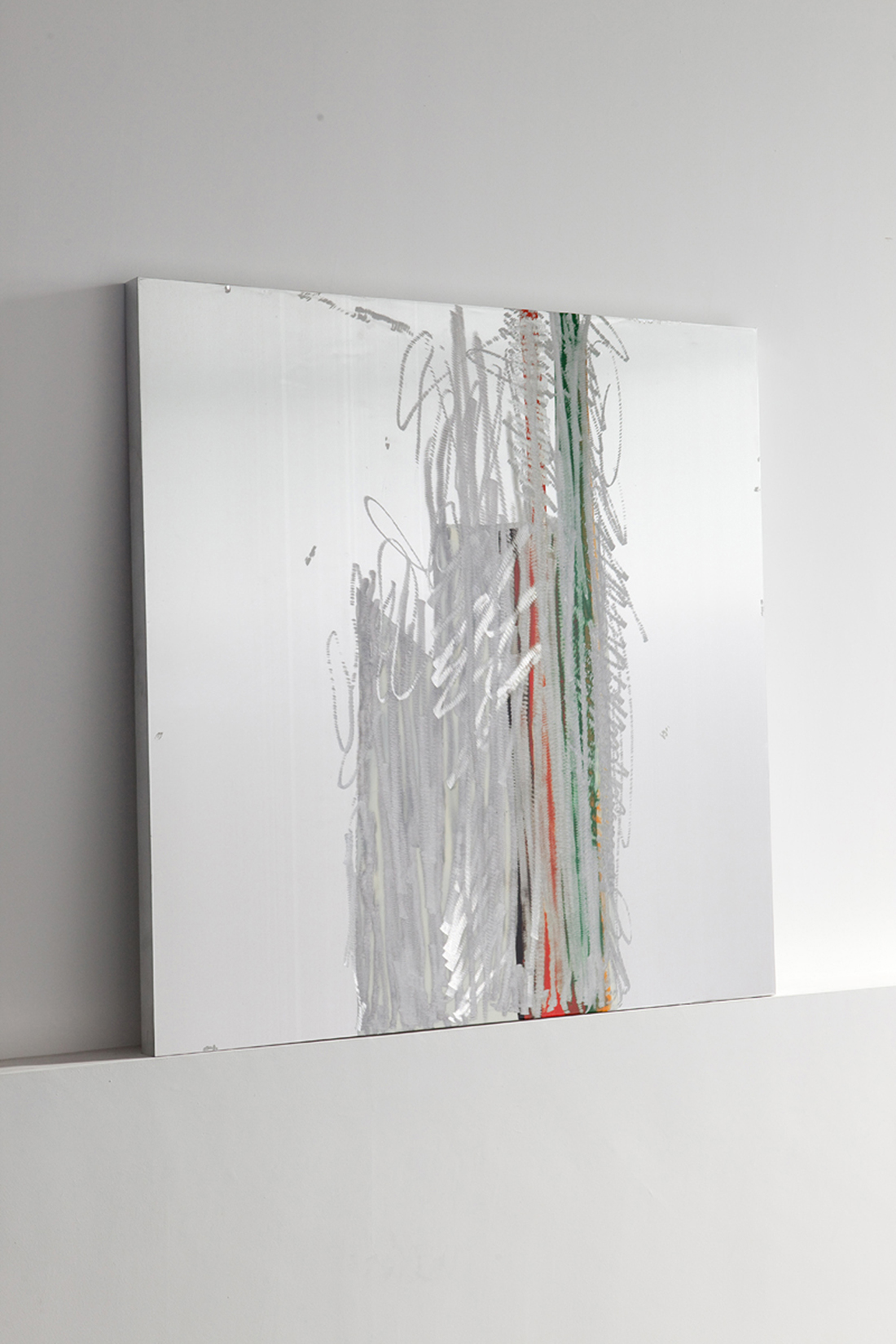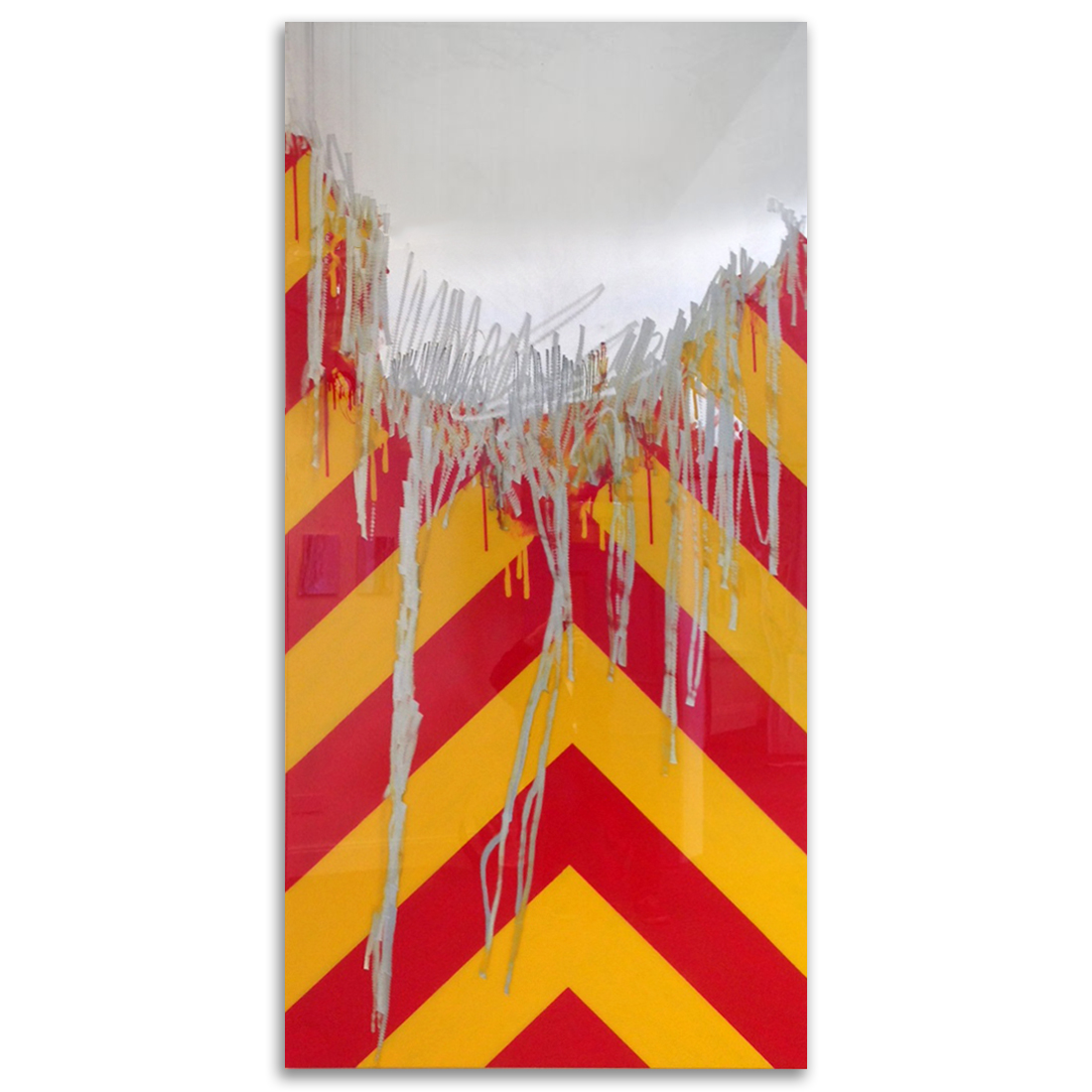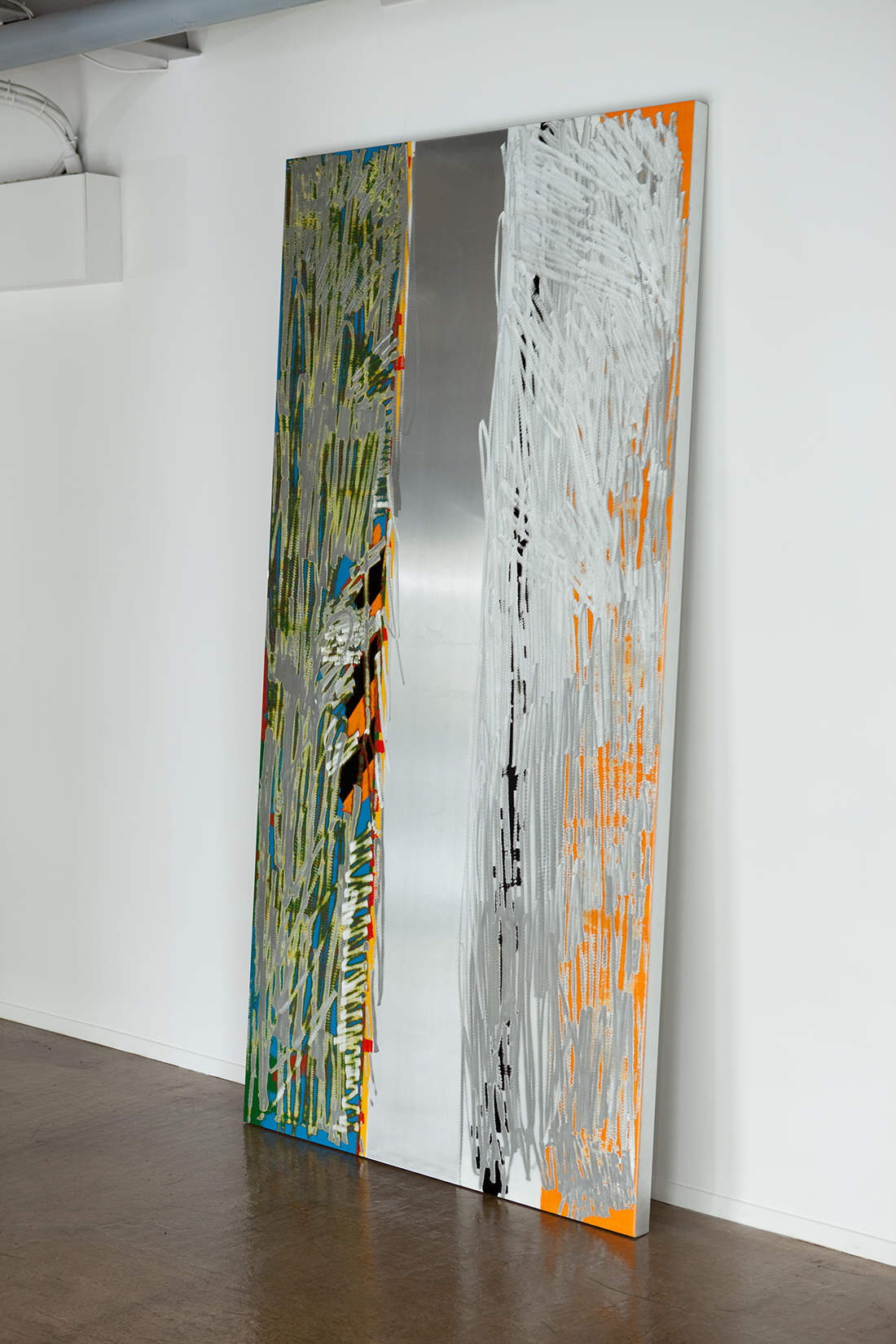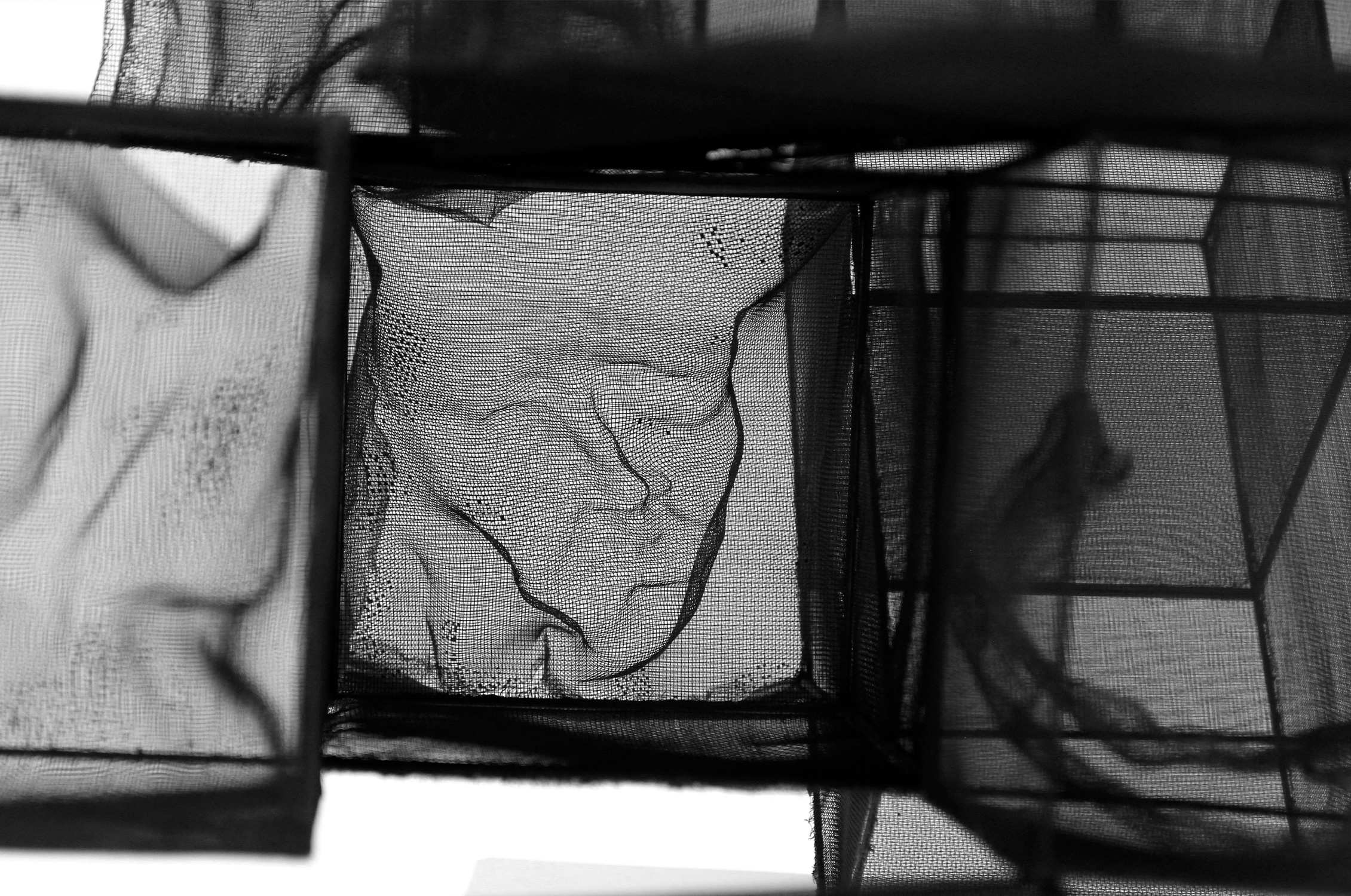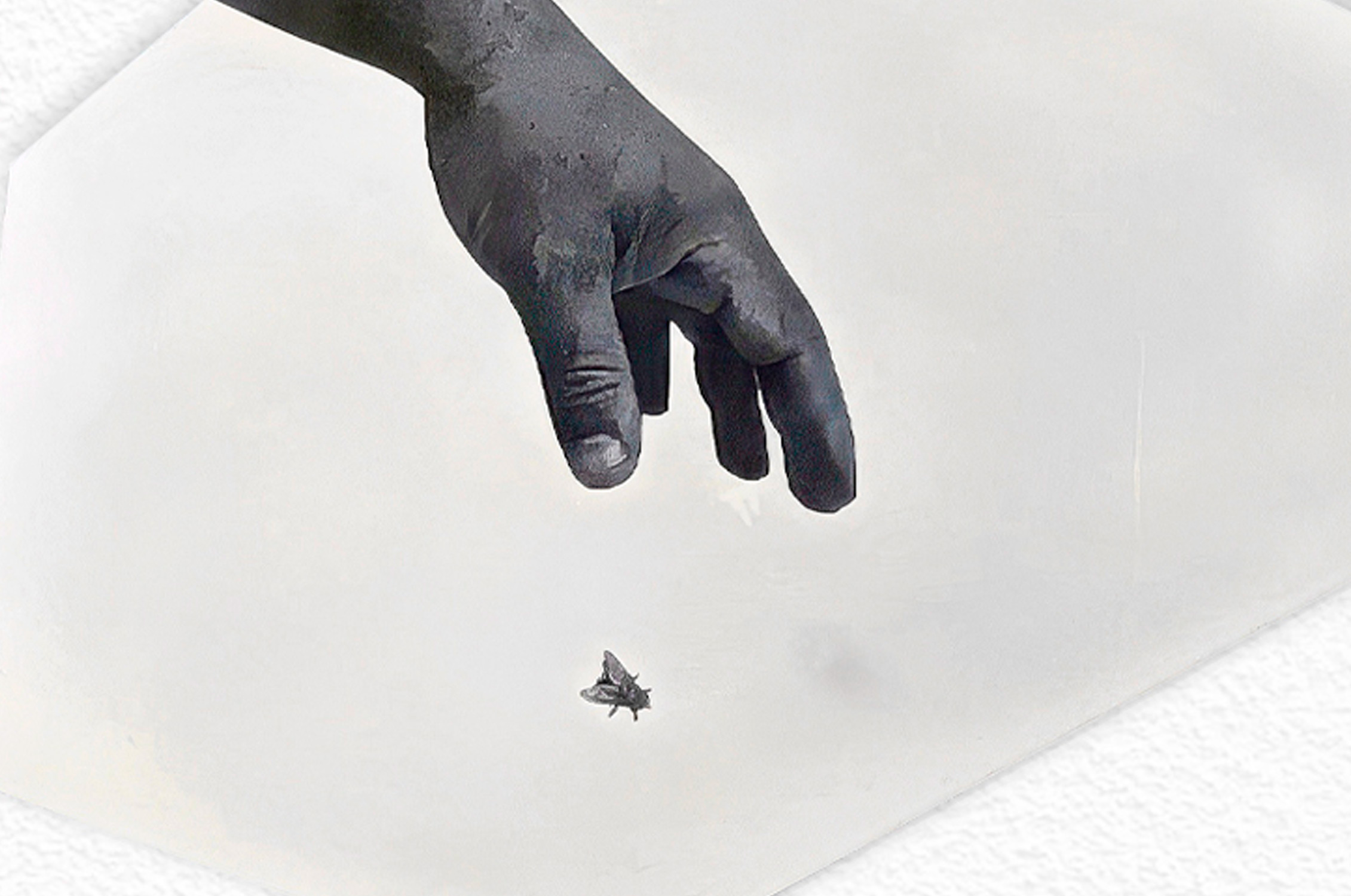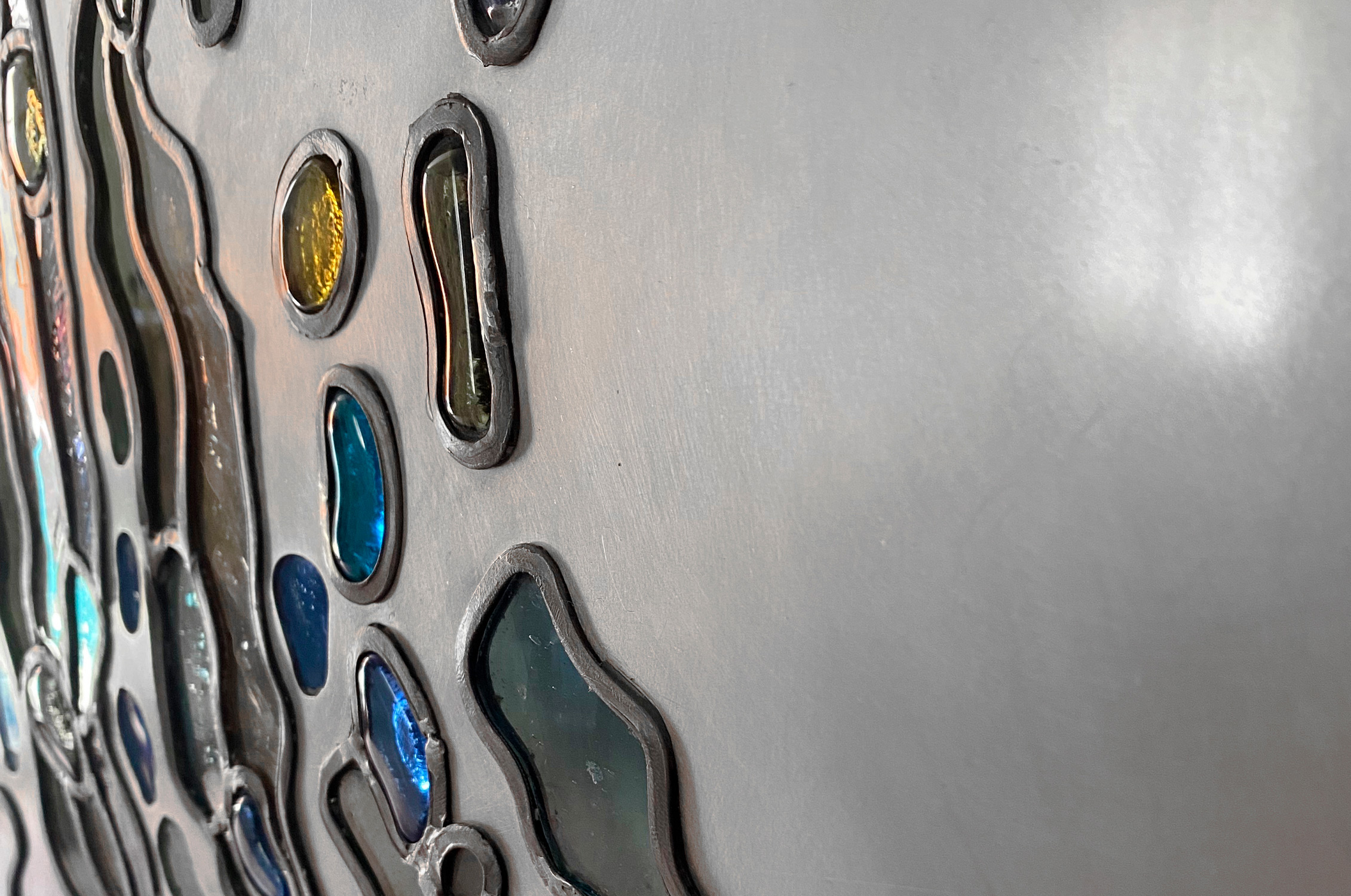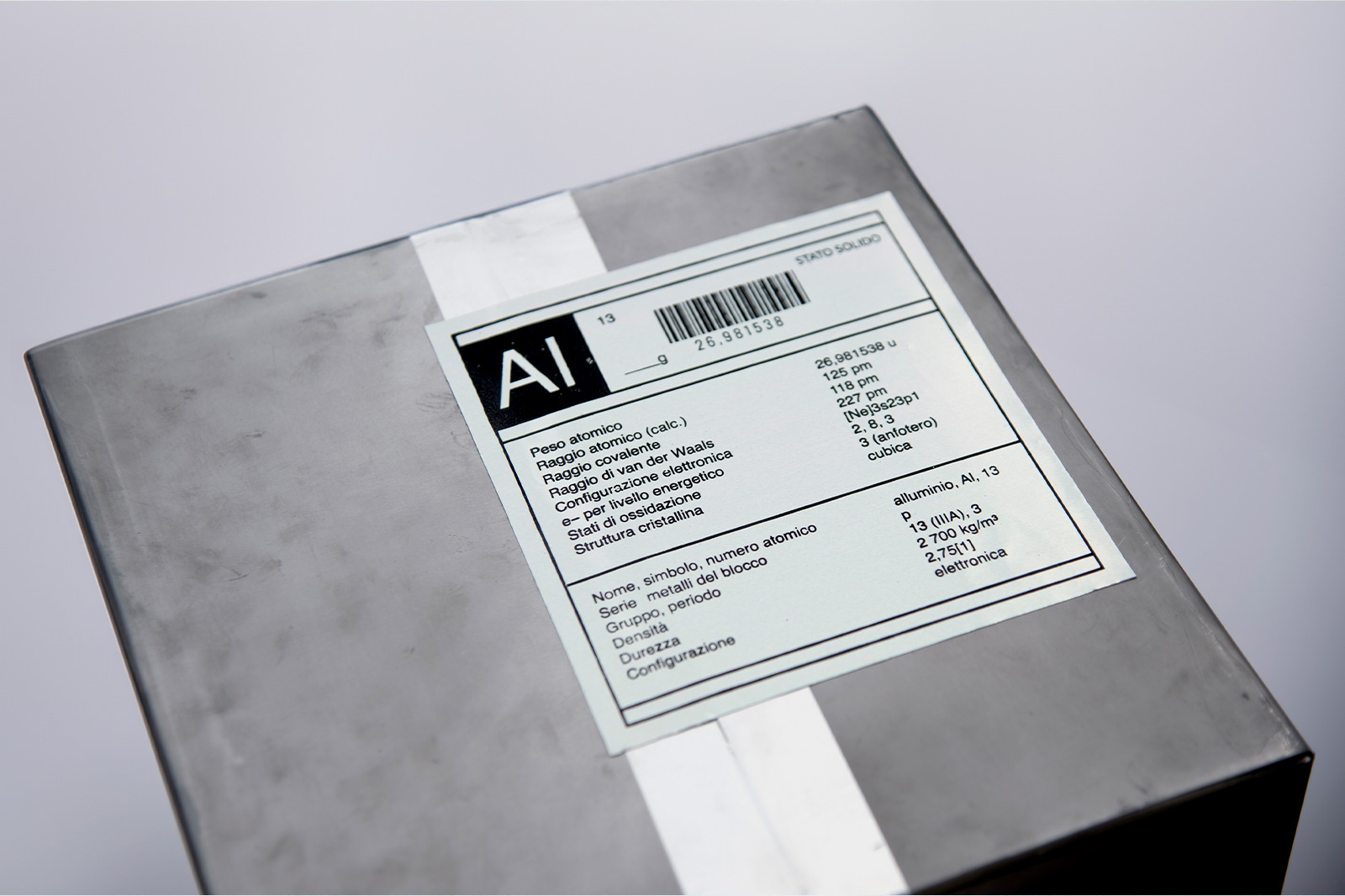WINNER OF THE COMEL AWARD 2013
Interview to Tony Charles
by Rosa Manauzzi
Tony Charles lives and works in Middlesbrough (UK). He founded the art gallery ‘Platform A’, along with other artists. Former metalworker and expert in metal working, he has given up the factory work. Now he is dedicated exclusively to art. Industrial signals are his favourite pictorial supports and instead of the brush he uses a grinder to carve and polish steel and aluminum. Surrounded by the gloomy weather of the north east of England and by the industrial pollution, he searches for light and beauty in the unusual material represented by the industrial signage and other objects related to this kind of environment. Despite his aesthetic achievement, he does not forget the human capital of the factories: the worker is the inspirational hero of his works.
In your portfolio you have a bachelor’s degree and a Master of Arts, and in your biography you claim to have experience in steel processing. What kind of job was it, were you a worker or a craftsman? I mean, did you work in a sort of assembly plant or did you work a material from its raw shape to the finished product?
When I was at school, my art teacher recommended that I go to art school but the industry in my town was so big that most of the people that I knew went into the steelworks and chemical works. I kind of got swept along and followed them. I learned the trade of fabrication and welding in steel construction then later was an inspector in the same field. From the moment I entered industry I regretted not going to art school. So eventually, I gave it up and went to study art.
At first, I wanted to be as far away as possible from the aesthetics of industry, but slowly I began to see the beauty in it, and I realized that it was an important part of me.
Do you still work in this field and how has your background helped you in your training as an artist?
No, I do not work in this field but my experience in industry has given me a self -discipline, a structure that enables me to view my practice as a job. I go to my studio at 9am and leave around 5 or 6pm most days.
Fettled Form
Why do you choose industrial material for your work? Are you able to find Beauty and Harmony in this kind of matter?
To answer this question I need to tell you about my earliest memory. This is a memory from when I was three years old. I suppose I can remember something so early in my life because it had such a profound effect upon me. My parents were in the British Army so I was born in Cyprus, we were there for 6 months after I was born. We then moved to Malta for just over 2 years. At this time my parents left the army and we moved to England. I was suddenly living in a place that was situated right in the middle of two enormous industrial sites. One was steelmaking and the other was chemicals. All this industry was in full production at that time so you can imagine the kind of pollution that resulted.
I had been transported from a warm climate with bright colors to a cold, dark heavily industrialized environment. For me, at three years old, it was as if the lights went out. From warmth and cleanliness to cold and grime.
After a while we moved a few miles away from there but I grew up in the shadow of industry and eventually spent some time working in it. Its importance also became apparent to me and my industrial experiences eventually informed my art. I think my early memory may be partly responsible for my search for beauty in industrial materials and processes; the beauty that I lost at three years old.
But also, this industrial aesthetic has something real about it, something that represents real hardworking people.
In your artistic career, when you started to create your artworks for exhibition, did you immediately have a propensity for contemporary art or did you go through different and more classical genres?
It was always contemporary but it was important for me to practice some traditional techniques such as observational drawing and painting because this helps us to see the world around us. I still have a drawing practice that is based on representational images but I try to approach this imagery from a new or different angle.
What is the social representation of your works? What do you want to represent, as an issue in particular, and what do you want to communicate to the public?
Issues differ from artwork to artwork I guess. I do try to challenge the viewer in some way. Some works such as the Vestiges series for example were made from rust and were swept away or vacuumed away at the end of the exhibitions. This was a reference to the concern that people have about the disappearance of manufacturing and the impact it has on domestic lives. Other work has been a memorial for people killed in industry.
The work in this particular exhibition is an attempt to raise the question whether this is a presentation of painting or a presentation of an industrial process. Other work has art historical references and some works simply illustrate the aesthetics of industrial materials or materials that are not traditionally associated with art.
Dressed to kill
Your previous exhibition in order of time, whose title is Abrasive Action, has already been presented in Manchester and has a title that sounds very final. It gives the idea of a decisive action that transforms a surface forever, uncovering something hidden. What do you want to uncover?
The exhibition in Manchester was a very different exhibition from this one (Dressed to Kill). The title obviously came from the process and was related to its physicality and its relationship with hard work. But the show was really an extension of the work I had been doing that referred to still life painting. I have been interested for some time in how still life seems to be at the bottom of a painting hierarchy and also how , in the Dutch still life painting of the 17th Century, beautifully crafted objects were painted and the paintings became more valuable than the object. The object then seemed to become redundant. This was the first sign of a rift between ‘Art’ and ‘Craft’. I was trying to make a painting that retained the object; a three dimensional painting. The objects have a painterly patina. I had always seen ‘grind marks’ as having a relationship with brushstrokes when I was in industry. Another work in the Abrasive Action show was a representational drawing of a grinding disc; a still life of an object that wouldn’t be normally drawn or painted. It was the actual tool that I had made the work with. It had a different concept to the show here at COMEL.
In 2011 you participated in the 54th Venice Biennale in a collective exhibition, was it your first time in Italy? What was this experience like?
My first time in Italy was in Milan which I greatly enjoyed and saw one of my favorite still life paintings; Caravaggio’s ‘Basket of Fruit’ in the Pinacoteca Ambrosiana.
When I went to Venice it was an amazing visual experience for me. I fell in love with it straight away and with Italy. All those Canalettos made sense! In Italy, the light is so beautiful and the work of Leonardo da Vinci, Caravaggio, Michelangelo etc. makes so much more sense.
Then, two years ago, you came back because you were selected for the third edition of the Comel Award and you also took part in a collective show in Rome in the same year. What have you most appreciated of our country?
I have been made to feel very welcome here, I love the weather, the Italian attitude to food and of course some of the contemporary artists of Italy very much interest me. Especially the Arte Povera movement.
What, according to you, is on the contrary impossible to understand of Italy, or what you don’t like?
That is a difficult question, I’ll tell you when I have learned a little bit more about Italy
Is there any Italian artist who you like particularly? Why? How have they influenced you?
The artists of Arte Povera are my main interest especially Pino Pascali and Jannis Kounellis. I am extremely interested in their ideas and aesthetics because there is an obvious connection to what I do. One can still look at the work they have made back in the 1960s and it still looks so fresh. There were similar ideas in America at the same time with the process artists, such as Robert Morris, Carl Andre, Robert Smithson, Richard Serra et al, but Arte Povera had such a huge artistic history to contend with which in some ways seemed to require more bravery, it seemed more radical to do this in Italy. I have a lot of admiration for them.
Who has influenced you the most from an artistic point of view? British artists or artists from other countries?
Well, in my recent investigation into still life I was very interested in the work of Giorgio Morandi. I love the simplicity of his work and the economy of means his paintings are made with. Arte Povera and the American Modernists are useful for me.
But I live in Britain so I have more contact with British artists. It’s a difficult question but I like to look as near and as far as possible for interesting ideas. I guess that the position my work is at now is more informed by my own experience combined with Italian ideas. This may change, I don’t know.
One of your works is dedicated to the workers who died because of industrial accidents. In Italy we define this kind of death “white deaths”, because we consider the workers as innocents and white color represents purity. Obviously these accidents are related to the loss of safety at work and in many cases also the workers are responsible. In other cases they are caused by tiredness, by too many hours of work. May we say that we live in a society where creativity and life are sacrificed to work? Couldn’t we live better with less work and more art?
This is an interesting term ‘White Deaths’. In my exhibition of dead workers I was conscious of the fact that these people were innocent but heroic. They contributed hugely to the economy but were never seen as heroes. Unlike people that have died fighting a war for example, who are always celebrated an given heroic status.
I think creativity can be applied to all work, art is also work. Some work is more dangerous than other work, that will never change so we need to be creative to make things safer. Art does not have the monopoly on creativity. One can see creativity in science, engineering, sport and any other profession or labor. Being creative is the way forward in every aspect of life. I think we could live better with more creativity.
Formally Dressed
What’s the ideal work you’d like to realize in your life and to whom would you like to dedicate it?
The ideal work would open people’s minds, it would be different to anything ever done, it would communicate clearly but challenge at the same time, and create conversation.
However, I’m not sure what the ideal work would look like or whether I would like to make this ideal work, because maybe then I would have to stop. I would have nothing more to say!
I would dedicate it to whoever or whatever inspired me to make it.
If it was possible to compare your art to some music, which soundtrack would you choose?
Probably something by Bob Dylan because he is one of my favorite artists.
Why is the exhibition called ‘Dressed to Kill’?
The industrial process I use in my works is called grinding. It is used very often to clean areas of steel and other metals. It is often used to clean up welds or to clean paint or rust from steel. Other terms for this clean-up process are Fettling or Dressing. To ‘dress’ a weld or a piece of steel is a term that means to clean it with the grinding process. Obviously this has a double meaning because it refers to clothes too. This is the reason for the titles ‘Formally Dressed’ and ‘Informally Dressed’.
‘Dressed to Kill’ is also a term used in English that means very smart and stylishly clothed. It has nothing to do with killing. It is particularly relevant for this exhibition in Italy because, in England, Italians are perceived as being very stylish. This piece of work was made specifically for this exhibition so I decided that the exhibition should have the same title.

